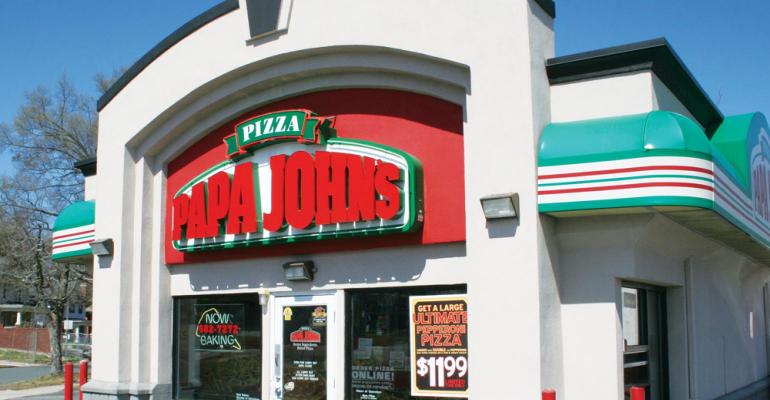Papa Johns International, Inc. continued its growth momentum with 1.9% same-store sales growth for North America during the first quarter ended March 27, the company reported on Thursday. In addition to the sales growth, the Louisville-based pizza chain is also planning an aggressive footprint expansion — especially in international markets — with plans for 1,400-1,800 new stores opening by the end of 2025, and 320 units opening in fiscal ’22, CEO Rob Lynch said. Accelerating unit growth contributed to about half of the company’s sales gains last quarter.
Lynch cited challenges the entire industry has faced over the past quarter-plus, including macroeconomic pressures like inflation, COVID variants, particularly Omicron in January, and of course, labor shortages. Despite these issues, a combination of menu innovation, new store growth, and reliance on third-party delivery partnerships to keep up with demand led to Papa John’s outperforming its competitors.
“January was the most difficult operating environment I've ever -- I've seen since I've been in this industry,” Lynch said during Thursday morning’s earnings call. “We had a lot of demand and it was really challenging. And so we leaned heavily into our partnership with DoorDash, particularly on the delivery the service side, and it saved us. As a team, we look back on the decision three years ago to make the investment in fully integrating with DoorDash and a delivery as a service capability as one of the very pivotal decisions that we've made it a team.”
Lynch remarks about Papa Johns consistent ability to keep up with customer demand and “meet customers where they are” could be directly compared to pizza industry competitor Domino’s, which reported softening sales last quarter and cited labor challenges as the pizza chain struggled to meet demand.
“Our deep aggregated partnership and integrations continue to drive incremental and profitable transactions,” Lynch added. “Aggregators provide another channel to meet our customers where they are. Not to mention additional delivery capacity at peak times. Aggregator marketplaces also become important venues for consumers to discover our brand.”
But despite Papa Johns optimism about staffing and ability to meet demand, like the rest of the industry, the company will be taking price increases to keep up with inflationary pressures. Lynch is confident this won’t have a detrimental impact on customers because “Papa Johns ticket growth has predominantly come through new premium products and add-ons.”
Papa Johns is combining the demand for its new menu items like Epic Stuffed Crust and New York Stuffed Crust pizzas with an accelerated digital loyalty strategy. For example, loyalty members were granted exclusive access to the Epic Pepperoni Stuffed Crust pizza before its launch, which added 150,000 new members during this period, bringing the total to 24.5 million members.
For the first quarter, total company revenues increased 6.0% to $542.7 million. Net income dwindled from $33.9 million during Q1 2021 to $10.5 million Q1 2022 or 29 cents per share, compared with 82 cents per share the same quarter last year.
Papa Johns opened 62 net new stores last quarter bolstered by international growth, for a total of 5,524 restaurants systemwide.
Contact Joanna Fantozzi at [email protected]
Follow her on Twitter: @JoannaFantozzi





